|
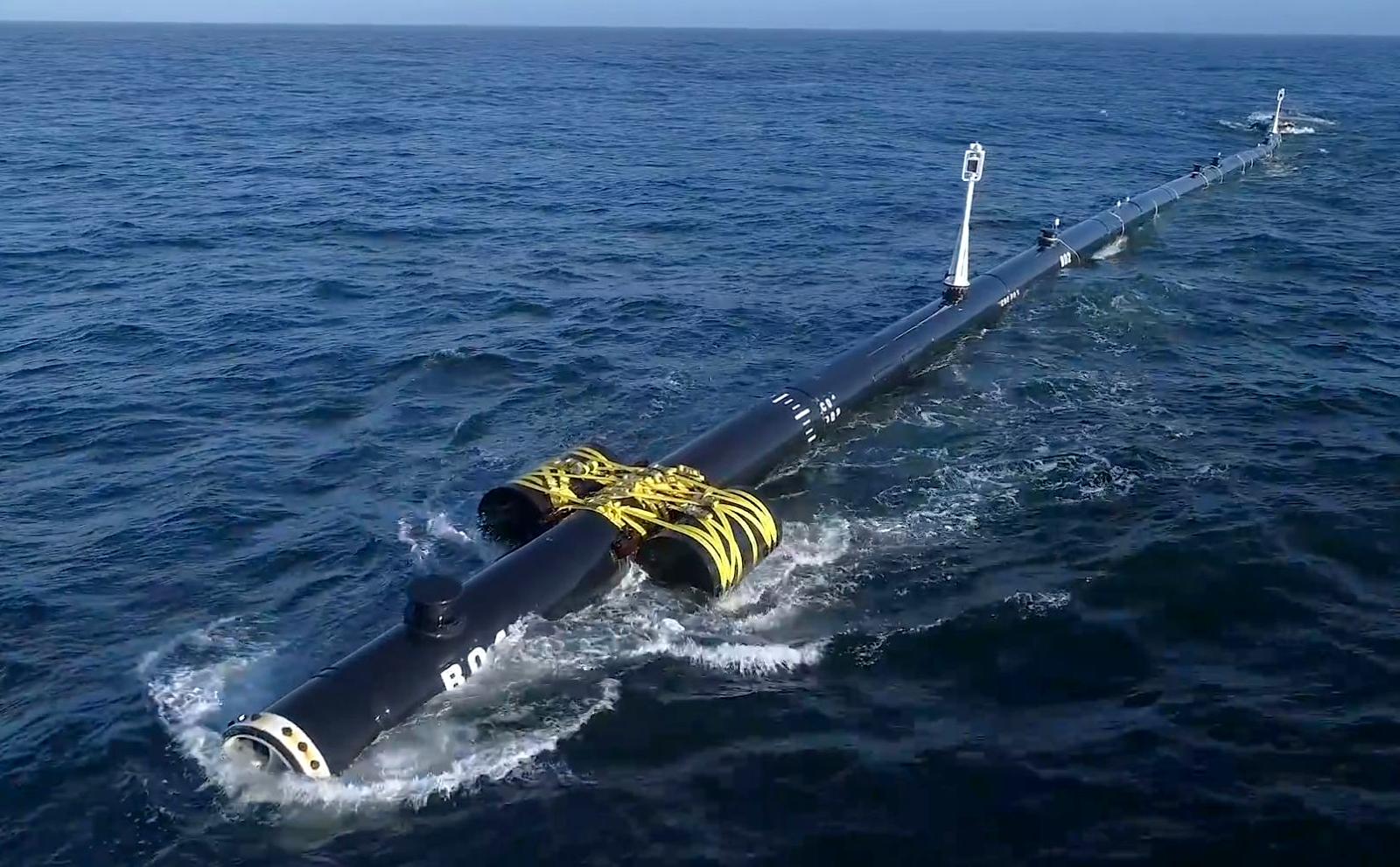
In
July of 2018 the project secured an independent Environmental Impact
Assessment.
With the thorough analysis performed by independent environmental consultancy CSA Ocean Sciences now complete, The Ocean Cleanup has issued the results of the Environmental Impact Assessment (EIA) for System 001.
The purpose of the EIA is to address the potential environmental risks of various factors related to the deployment of the first ocean cleanup system. Overall, the conclusions indicate a low or negligible risk for the implementation of System 001 in the Great Pacific Garbage Patch.
THE EIA EXPLAINED
An Environmental Impact Assessment (EIA) is a study to evaluate the environmental, social and economic impacts a project may have on a range of resources during its life cycle. The EIA is used to identify possible risks and offers mitigation options before the project takes place.
Considered in this EIA are the multiple factors related to the deployment of The Ocean Cleanup system and their potential impact; these include:
-
towing operations,
-
entanglement and entrapment,
-
attraction/ingestion of plastics,
-
interactions or collisions with other vessels,
-
noise and lights,
-
and the loss of debris.
The potential areas of impact included a variety of marine life and birds, vessels not in connection with The Ocean Cleanup and protected areas.
WHY
THEY CONDUCTED AN EIA
Because the deployment of the system will take place primarily in international waters, except for routine towing, there are no requirements for this assessment. Nevertheless, in the interest of
transparency, and to develop a deeper understanding of the interactions between our operations and the environment, an EIA was performed; which meets the 1999 International Association for Impact Assessment Principles of Environmental Impact Assessment Best Practices
(IAIA, 1999).
RESULTS
The EIA identifies both initial and residual environmental impacts-i.e., effects resulting before and after the application of mitigation measures. Mitigation measures are defined for all impacts, regardless of the severity. For the sixteen environmental and human resources considered, 29 impact factors were identified and analyzed in depth, and all but one were determined to have “Low” or “Negligible” impacts resulting from project activities (even before the application of mitigation measures). One “Medium” risk was identified; potential attraction of sea turtles to the cleanup system and/or ingestion of plastics due to the concentration near the floating screen. There were no “High” impacts on any resources resulting from the project.
Download the Environmental Impact Assessment (.pdf)
GOING FORWARD
While the baseline today is that hundreds of thousands of whales, seals, sea turtles and sea birds die every year from entanglement and ingestion of ocean plastic, The Ocean Cleanup can conduct its cleanup activities with greater confidence and a broader understanding now that we possess the information presented in the EIA. Although the identified impacts pose minimal risk, we have planned for extensive on-site monitoring of the system and the surrounding environment during the first year of deployment. In addition, several safety and mitigation measures will be tested on System 001 during the plastic removal procedure.
We will continue to share real-world environmental findings when the cleanup operation of the Great Pacific Garbage Patch has commenced later this year.
Although not required by law, The Ocean Cleanup has commissioned an independent EIA. This follows extensive engagement with regulators, experts, and others. We will continue to consider feedback and respond as frequently as time and our limited resources permit.
For questions or comments, please contact: eia@theoceancleanup.com
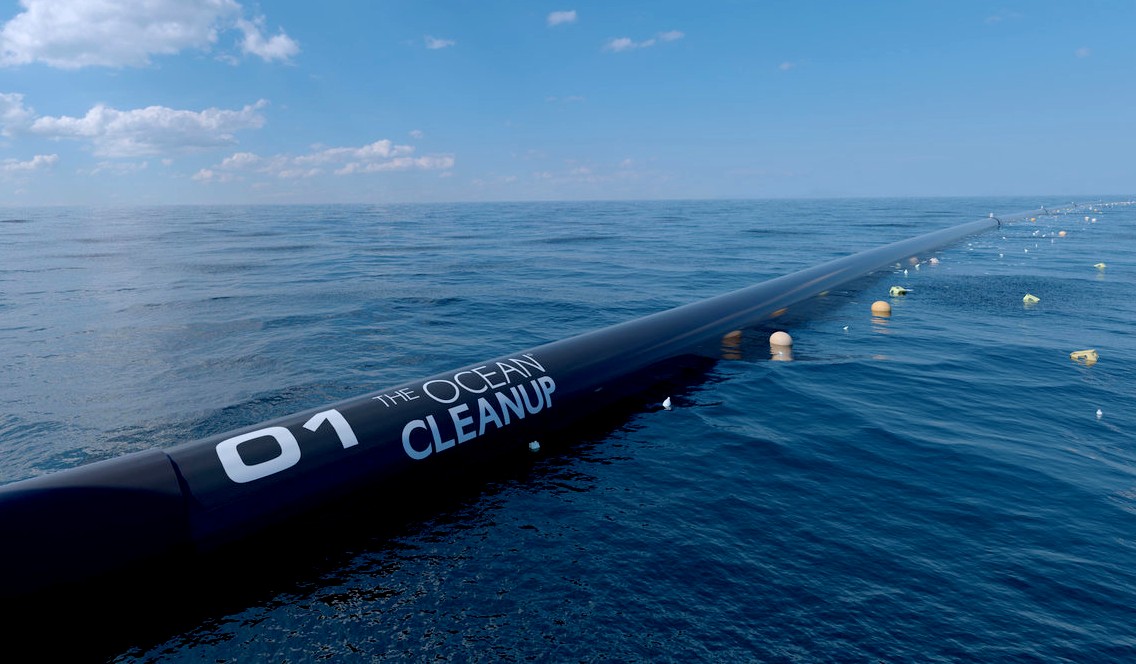
The Ocean Cleanup is non-government engineering environmental organization based in Netherlands, that develops technology to extract plastic
pollution from the oceans.
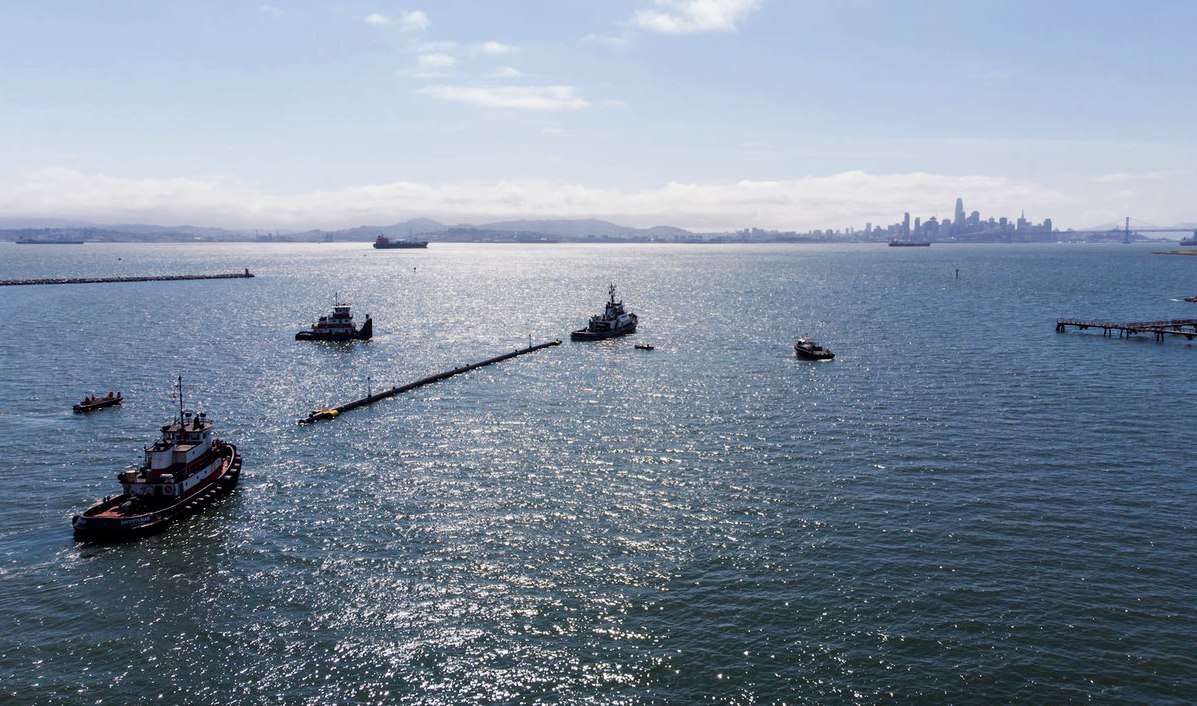
Environmental Impact Assessment 23 JULY 2018
"Activities from the proposed towing and deployment will produce emissions from
internal combustion
engines, including greenhouse gases, and varying amounts of other pollutants such as
carbon monoxide, oxides of
nitrogen, and sulfur, volatile organic compounds, and particulate matter.
The geographic location of operations ranges from Alameda Island in San Francisco Bay to the
proposed deployment location approximately 1,880 km (1,015 nmi) from shore in the EPGP.
The
amount of air pollutants and greenhouse gases generated during The Ocean Cleanup activities will
depend primarily on the number, design, and size of the vessels; the size of engines and generators
on the vessels; the distance traversed under power; and overall duration of the activities, however,
due to the limited extent and duration of activities, the amount of pollutants is expected to be
nominal."
That
is according to this Assessment, but no figures are provided for the reader
to be able to agree or disagree. For example, the Report suggests: "..a
limited duration and extent of activities."
But
is that true?
Surely
we need to know the ratio of Greenhouse Gas production and the cost of
fuels, in order to be able to quantify the environmental costs as related to
plastic recovered.
Air Quality
"Potential impacts from emissions on air quality are expected to be negligible. Vessels (towing,
monitoring, and debris retrieval), machinery, and equipment involved in The Ocean Cleanup
activities will emit a variety of air pollutants, including nitrogen oxides, sulfur oxides, particulate
matter, volatile organic compounds, and carbon monoxide, as well as greenhouse gases (e.g.,
carbon dioxide) primarily
from combustion of fossil fuels for propulsion and power generation.
The amount
of air pollutants and greenhouse gases generated during The Ocean Cleanup activities will depend
primarily on the number, design, and size of the vessels; the size of engines and generators on the
vessels; the distance traversed under power; and overall duration of the activities, however, due to
the limited extent and duration of activities, the amount of pollutants is expected to be nominal.
The
Ocean Cleanup is currently performing a Life Cycle Assessment to full estimate
greenhouse gas
emissions from the towing and deployment. Due to the novelty of the project, the Assessment will
last the full year of the deployment and will help The Ocean Cleanup to quantify actual impacts to air
quality from project emissions and to identify possible mitigation measures for future activities.
Air emissions from The Ocean Cleanup vessels will contribute nominal amounts of pollutants to the
emissions inventories for vessels in the waters offshore San Francisco. Air quality could be
temporarily affected by an accidental fuel spill in the immediate vicinity of the spill, but due to the
small volume of a potential spill and the high volatility of refined fuels, any impacts on air quality are
expected to be negligible. For these reasons, a more extensive analysis of air quality emissions
associated with anticipated operations will not be performed as part of this EIA."
We
are pleased to see that there will be a log of fuels used. This should also
include the carbon and food footprints of the crews.
Where
we are advocates of ocean cleaning, it must be that this information should
be provided in the interests of transparency. Not to do so might raise a few
eyebrows.
This
report is interesting as it underscores some of the issues identified in the
operation of SeaVax
and RiverVax
machines.
OPERATIONAL
MOVEMENTS
1.
Fuel (bunker heavy
oil) used in boom towing operations to and from start
& end.
2.
Fuel (diesel) used by
fishing vessels in netting and landing plastic from
the booms.
3.
Fuel used in providing life support (though could be included in 1. above.
4.
Food and other provisioning for support boats.
MITIGATION
& OFFSET
By
way of mitigation when comparing to the SeaVax and SeaBin systems (for
example) it is important to look at how much energy it takes in total to
land plastic ashore, or to deposit with other ocean based treatment
facilities.
PROJECT
BACKGROUND
The Ocean Cleanup has developed a prototype passive drifting system (The Ocean Cleanup System
or OCS) to collect buoyant plastic debris from the Great Pacific Garbage
Patch. There are multiple areas where the debris accumulates, and The Ocean Cleanup is focusing on the area known as the
Eastern Pacific Garbage Patch (EPGP) which is located roughly midway between California and
Hawaii within the North Pacific Subtropical
Gyre.
The Ocean Cleanup is planning a year-long deployment in the EPGP in a location approximately
1,880 km (1,015 nmi) from San Francisco. Assembly of the OCS has begun on Alemeda Island in the
San Francisco Bay and The Ocean Cleanup estimates that it will be completed in mid-2018.
Prior to
deployment, The Ocean Cleanup will conduct a Tow Test outside of the shipping channel and
protected areas offshore San Francisco and a trial deployment at a currently undetermined location
outside of the United States Exclusive Economic Zone (U.S. EEZ) (>370 km [200 nmi] from the
California coast) that will last approximately two weeks.
After the Tow Test and trial deployment, the
OCS will be towed to the EPGP and it is estimated that this will require 22 days of towing to reach
the designated location.
Purpose and Need
The Ocean Cleanup voluntarily chose to conduct an Environmental Impact Assessment (EIA) to
properly assess potential impacts and ensure that mitigation measures could be implemented to
reduce or eliminate any substantial identified impacts. The Tow Test will utilize a U.S. flagged vessel,
while the vessel used for the Pacific Trial and deployment to the EPGP will not be U.S. flagged and
will not be completed by U.S. citizens. All of the proposed activities (except the Tow Test) will occur
in international waters outside of the U.S. EEZ. Because no permits are required, the proposed
activities do not fall under regulatory oversight of the United States National Environmental Policy
Act and no environmental impact assessment (EIA) is required. In the absence of regulatory
requirements, this EIA was created to meet the 1999 International Association for Impact
Assessment Principles of Environmental Impact Assessment Best Practices (IAIA, 1999).
EIA Summary
The various components of the activities being proposed by The Ocean Cleanup (including towing
operations from San Francisco Bay and a year-long deployment in the EPGP) have been evaluated for
potential impacts to the biological, physical, chemical and social environment. A total of 16 resource
areas were considered, including:
• Air Quality
• Water Quality
• Sediment Quality
• Plankton
• Fish and Fishery Resources
• Benthic Communities
• Marine Mammals
• Sea Turtles
• Coastal and Oceanic Birds
• Protected Areas
• Biodiversity
• Archaeological Resources
• Commercial and Military Vessels
• Human Resources, Land Use, and Economics
• Recreational Resources and Tourism
• Physical ocean factors
A preliminary screening was conducted to identify the resources at risk from the towing and
deployment of the OCS in the EPGP. In this preliminary analysis, the level of impact associated with
each interaction was categorized as “potential impact for analysis” (e.g., a measurable impact to a
resource is predicted) or “no impact expected” (i.e., no measurable impact to a resource is
predicted).
Several resources were identified as having no expected impacts from the proposed
activities and were removed from further analysis. Resource areas that were screened out included
air quality; sediment quality; water quality; benthic communities; biodiversity; human resources,
land use and economics; recreational resources and tourism; and physical oceanography.
The
remaining resource areas were characterized based on review and summarization of pertinent data
sources, including peer-reviewed literature, government publications, and applicable datasets. The
impact assessment methodology was conducted from a risk-based perspective to determine the
overall significance of each potential impact based on its consequence and likelihood (Table ES-1).
Impacts from routine operations resulting from the proposed activities are expected to occur based
on a series of impact producing factors, including:
• Towing Operations
• OCS – Entanglement/Entrapment
• OCS – Attraction/Ingestion of Plastics
• Vessel – Physical Presence/Strikes
• Noise and Lights
• Loss of Debris
The Environmental Impact Assessment also addressed potential impacts associated with an
accidental fuel spill. Resources potentially affected by each impact producing factor were
subsequently evaluated. The impact assessment process involved: 1) an initial determination of
impact, without any mitigation; 2) an identification and application of appropriate mitigation
measures; and 3) a determination of impact after mitigation was applied (i.e., residual impact).
Impacts resulting from routine operations associated with the proposed activities were rated, in
terms of overall impact significance using an alphanumeric and color code, as follows:
Impacts rated Medium or High were considered primary candidates for mitigation, while those rated
Negligible or Low were of secondary importance from a mitigation perspective. In application,
mitigation measures were considered for all impacts, regardless of impact level. The initial analysis
of routine operations (i.e., prior to application of mitigation measures) produced impact
determinations that were predominately in the Negligible or Low categories. No High level impacts
were noted. A comprehensive discussion of the mitigation measures and corporate/subcontractor
policies that The Ocean Cleanup will follow during their proposed activities is presented under
separate cover in an Environmental Management Plan.
Impacts from an accidental fuel spill were identified based on the accidental release of diesel fuel.
Diesel fuel released into the marine environment undergoes rapid weathering, including evaporation
and dissolution. Given the relatively small potential spill volume and weathering factors, the impacts
to various resources from a fuel spill release were routinely rated Negligible or Low. Impacts from an
accidental diesel fuel spill are expected to be localized and relatively short-term (due to its high
volatility and dispersibility).
A tabular summary of impacts from routine operations and an accidental
fuel spill is presented in Table ES-2. When proper mitigation measures, maritime regulations, and
industry best practices are applied, the significance of potential impacts of the proposed activities
will generally be Negligible or Low. Moreover, the long-term positive impacts as a result of removing
large amounts of floating plastic from the EPGP will likely provide a beneficial impact to biological
resources in the region.
INTRODUCTION
The Ocean Cleanup has developed a prototype passive drifting system (the Ocean Cleanup System or
OCS) to collect buoyant plastic debris from the Great Pacific Garbage Patch. The Great Pacific
Garbage Patch refers to areas in the Pacific Ocean that act as natural gathering points where rotating
currents, winds, and other ocean features converge to accumulate marine debris. There are multiple
areas where the debris accumulates, and The Ocean Cleanup is focusing on the area known as the
Eastern Pacific Garbage Patch (EPGP) which is located roughly midway between California and
Hawaii within the North Pacific Subtropical Gyre (NPSG) (Figure 1-1).
The Ocean Cleanup is planning an approximately year-long deployment in the EPGP in a location
approximately 1,880 km (1,015 nmi) from San Francisco. This Environmental Impact Assessment
(EIA) presents the existing environmental conditions of the area that may be potentially impacted by
the proposed project which includes a Tow Test, followed by towing operations from San Francisco
Bay to the Pacific trial location outside the United States Exclusive Economic Zone (U.S. EEZ) and
finally to a location within the EPGP. The EIA provides a description of the Tow Test, towing
operations, and deployment of the OCS in the EPGP and an assessment of potential environmental
impacts that may result from operations together with recommendations to manage, mitigate, and
monitor those impacts. The EIA is organized as follows:
• The Executive Summary is a short, non-technical summary of the project that briefly describes
the baseline environment, the risk assessment methodology, potentially significant impacts, and
mitigation measures.
• Chapter 1.0, Introduction, presents the project, including objectives, location, and scheduling.
This chapter discusses the purpose, scope, and organization of the EIA.
• Chapter 2.0, Project Description, provides a detailed narrative of the proposed activities, the
waste and emissions that may be associated with such a project, and the purpose of the project.
Planned activities that may affect the environment are described in sufficient detail to support
impact assessment.
• Chapter 3.0, Legislative and Regulatory Environment, identifies and describes the national and
international laws, regulations, guidelines, protocols and standards that were considered as
potentially applicable to the proposed project. This chapter summarizes specific permitting
requirements that were considered in relation to the proposed project.
• Chapter 4.0, Description of the Existing Environment, characterizes the conditions of the
project area environment in terms of the physical, chemical, and biological components. This
chapter presents key information needed to understand the environmental setting, identify
valued ecosystem components, and assess impacts. This chapter also provides a preliminary
screening of resources to eliminate resources with little or no potential for adverse or significant
impact from the detailed analysis. The text is organized as follows:
o Preliminary Screening of Activities and Affected Resources;
o Data Sources;
o Biological Environment; and
o Social Environment.
• Chapter 5.0, Potential Environmental Impacts, identifies and assesses the potential
environmental impacts from this proposed project, both beneficial and negative. The chapter
includes the basis for impact designation, impacts from routine operations, and impacts from
potential accidents or upsets. Cumulative impacts are also discussed.
• Chapter 6.0, Conclusion, summarizes the findings of the
EIA.
• Chapter 7.0, Literature Cited, lists all published and unpublished data sources in this
EIA.
• Appendix, presents technical data used in support of the EIA.
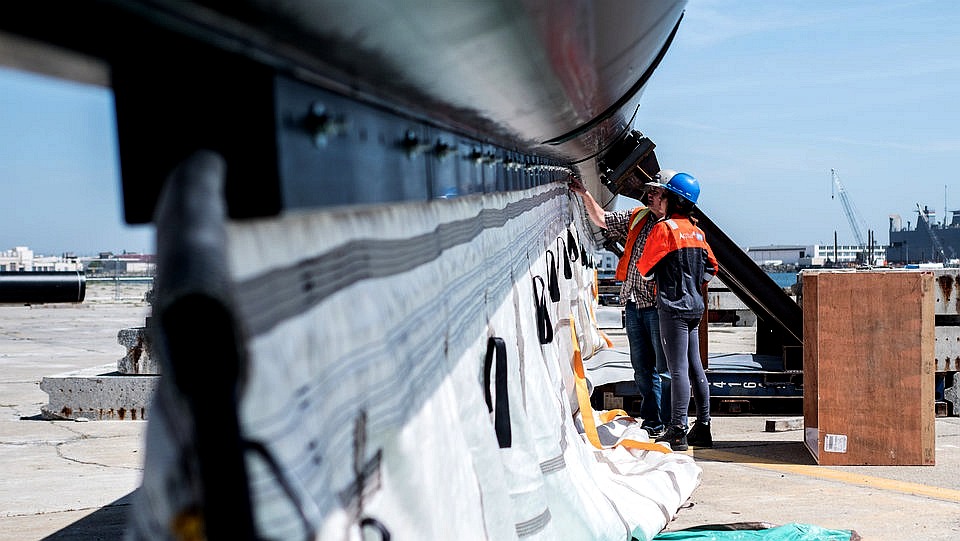
ACRONYMS
ADD Acoustic Deterrent Device
AHS Acoustic Harassment Device
AIS Automatic Identification System
BOEM Bureau of Ocean Energy Management
CCS California Current System
CSA CSA Ocean Sciences Inc.
dB decibels
DPS distinct population segment
EEZ Exclusive Economic Zone
EFH Essential fish habitat
EIA Environmental Impact Assessment
EPGP Eastern Pacific Garbage Patch
ESA Endangered Species Act
FAD fish aggregating device
GPS global positioning system
HDPE High density polyethylene
IHA incidental harassment authorization
IMO International Maritime Organization
IPF Impact producing factor
ITA incidental take authorization
IUCN International Union for Conservation of Nature
MARPOL International Convention for the Prevention of Pollution from Ships
MBTA Migratory Bird Treaty Act
MMPA Marine Mammal Protection Act
MOU Memorandum of Understanding
MPA Marine Protected Area
MSFCMA Magnuson-Steven’s Fishery Conservation and Management Act
MWA Military Warning Area
NEPA National Environmental Policy Act
NMFS National Marine Fisheries Service
NMS National Marine Sanctuary
NMSA National Marine Sanctuaries Act
NOAA National Oceanic and Atmospheric Administration
NPP Net primary production
NPSG North Pacific Subtropical Gyre
NTM Notice to Mariners
OCS The Ocean Cleanup System
ONMS Office of National Marine Sanctuaries
PAM Passive Acoustic Monitoring
U.S. EEZ United States Exclusive Economic Zone
U.S. United States
USCG U.S. Coast Guard
USEPA United States Environmental Protection Agency
USFWS United States Fish and Wildlife Service
CONTACTS
SA Ocean Sciences, Inc.
8502 SW Kansas Avenue
Stuart, Florida 34997
United States
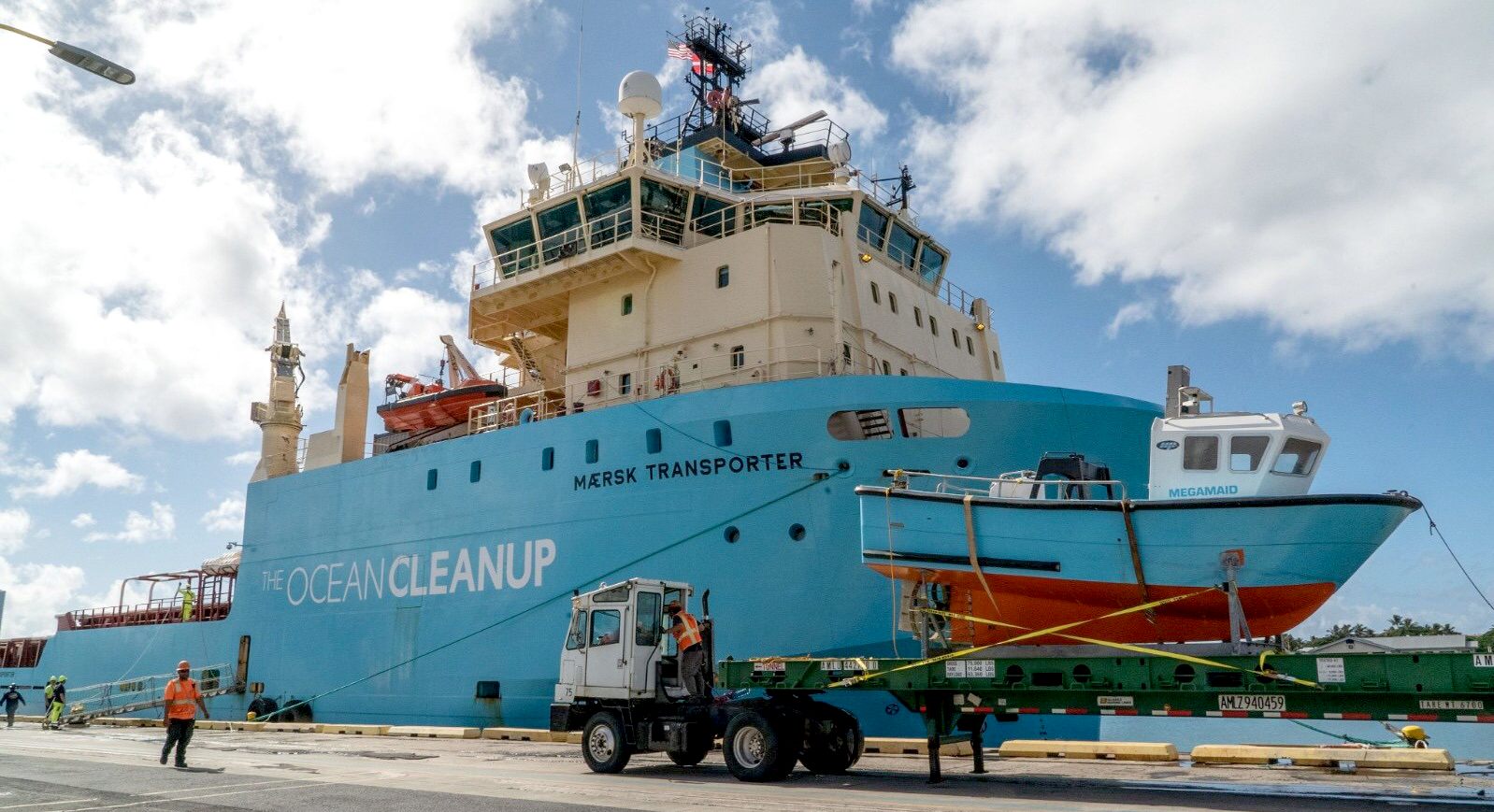
PROJECT
HISTORY 2012 - 2021 2012
- TED Talk 2013
- Company Formation 2014
- Concept Revisions 2015
- Scale Model Tests 2016
- North Sea Trial 2017
- Pipe Size Reduction 2018
- Wilson & Scale Test 2019
- Sea Trials Pacific 2019
- River skimming barges 2020
- The Future 2021
- Qualified success Sept 16 (Reuters) OCEAN
CLEANUP PROJECTS
*
Aliance
to end Plastic Waste
*
Boyan
Slat's ocean booms
*
4Ocean recycled plastic bracelets
*
Kulo
Luna graphic novel
*
Ocean
Voyages Institute
*
Ocean Waste Plastic
*
Seabin
*
Sea Litter
Critters
*
SeaVax autonomous drones
*
World Oceans Day
LINKS
& REFERENCE https://theoceancleanup.com/
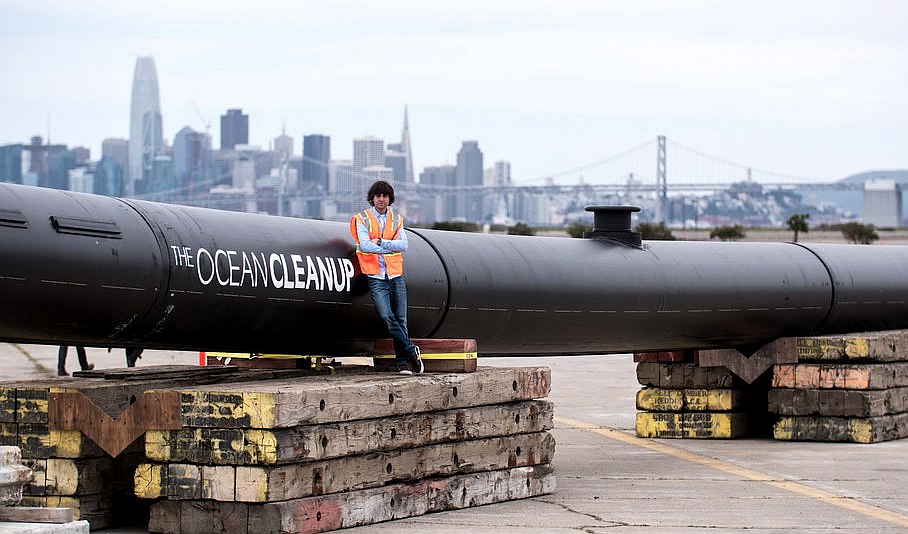 |





